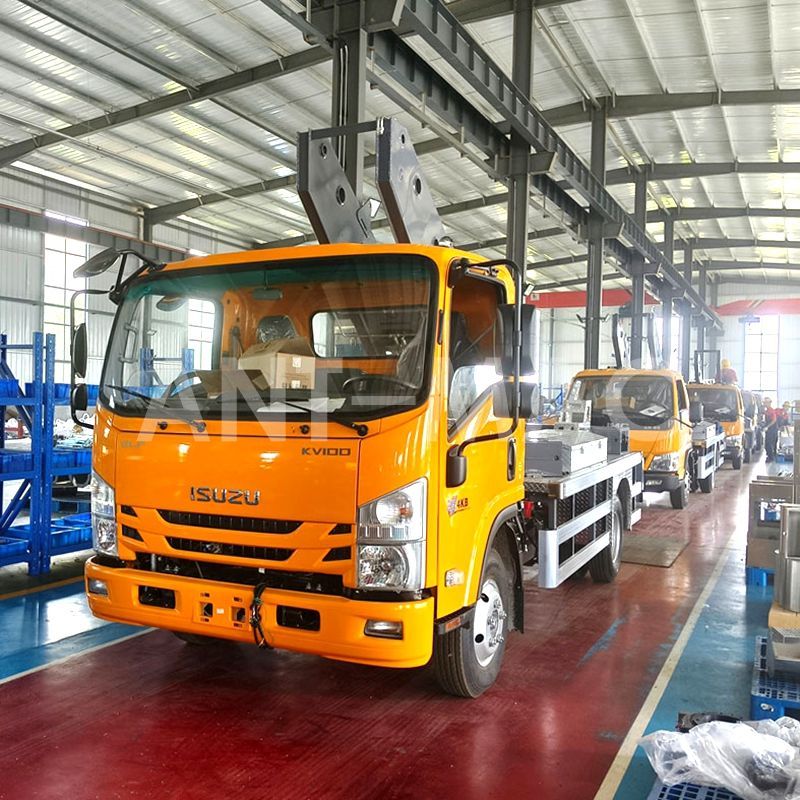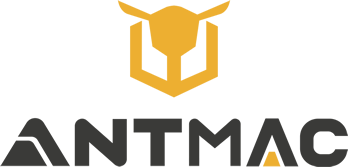Core Considerations for Material Selection and Structural Design of Scissor Lifts
In the field of aerial work equipment, the performance and safety reliability of scissor lifts essentially reflect the deep integration of materials science and structural engineering. From the material mix ratio of core components to the mechanical optimization of overall frameworks, every design decision must balance load-bearing capacity, environmental adaptability, and life-cycle costs. This article analyzes the common technical logic of the industry from the two dimensions of material selection and structural design, and reveals how technological iterations enhance equipment value by combining innovative practices of leading enterprises like Ant.
I. Material Selection: Performance-Oriented Scenario-Based Adaptation Strategies
High-Strength Steel: The Core Support for Heavy-Duty Scenarios
As the core load-bearing structure, scissor arms typically use high-strength steel with a yield strength of ≥600MPa, achieving maximum "strength-to-weight ratio" through optimized material mix ratio. While ensuring high load-bearing capacity, these materials can reduce component thickness, lowering equipment self-weight by 15% to 20%, and effectively reducing energy consumption and carbon emissions. For example, after Ant adopted custom high-strength steel for a client's scissor lift, the load capacity increased by 10%, while the entire machine weight decreased by 300 kg, significantly improving mobility flexibility and road adaptability, especially for outdoor heavy-duty scenarios.
Lightweight Aluminum Alloy: The Preferred Solution for Indoor Precision Operations
For indoor clean environments (such as electronics factories and pharmaceutical warehouses), aluminum alloy materials become the first choice due to their low density (only 1/3 of steel) and strong corrosion resistance. Through aviation-grade forging processes, aluminum alloy scissor arms reduce self-weight by over 30% compared to steel components while maintaining the same stiffness, and their surface oxidation treatment can resist acid-base erosion, meeting the extremely high cleanliness requirements of scenarios like food processing and precision instrument maintenance.
New Composite Materials: A Breakthrough for Extreme Environments
In wide temperature range scenarios from -40°C to 70°C, some high-end models use composite reinforced materials. Through nano-scale particle modification technology, the low-temperature embrittlement resistance of components is increased by 50%, while also having anti-ultraviolet aging capabilities. The application of such materials not only extends the service life of equipment in high-altitude, extremely cold/hot regions but also achieves rapid replacement of key components through modular design, reducing downtime maintenance time by more than 40%.
Material Certification and Standard Compliance
All core materials must pass international general testing (such as EN 280 mechanical safety certification and ISO 12100 risk assessment standards) to ensure that structural stress under rated load is lower than 80% of the material's yield strength. Manufacturers typically establish a full-process material traceability system, strictly controlling material reliability from smelting composition analysis to non-destructive testing (such as ultrasonic flaw detection) after forming.
II. Structural Design: Systematic Optimization for Stability and Efficiency
Mechanical Balance of Scissor Arm Geometric Structure
The layout of hinge points and the arm length ratio of scissor arms directly affect equipment stability. Mainstream designs adopt a double parallelogram structure, and by adding auxiliary support members, the platform levelness error is controlled within 0.5 degrees, ensuring stability even when operating on a 5-degree inclined ground. Meanwhile, self-lubricating composite bushings are used at the joints to replace traditional metal bearings, reducing the friction coefficient by 60%, which not only reduces maintenance frequency but also improves movement smoothness.
Terrain Adaptation of Chassis Drive Systems
Wheel-Type Chassis: Using high-elasticity non-marking tires with an intelligent steering system, the minimum turning radius can be controlled within 1.2 meters, suitable for rapid maneuvering in narrow indoor passages. The drive motor adopts IP65-level waterproof design, eliminating short-circuit risks when operating in wet environments.
Crawler Chassis: Aiming at complex terrains such as mud and gravel, it adopts a low ground pressure design (ground pressure ≤40kPa), with track tread depth reaching 15mm to enhance grip. Combined with dynamic adjustment of the suspension system, the equipment can still lift and lower smoothly on a 15-degree slope, and the anti-tip safety factor is increased to 1.5 times the rated load.
Collaborative Optimization of Hydraulic and Electrical Systems
The hydraulic system uses load-sensitive pump control technology to automatically adjust flow according to real-time load, reducing energy consumption by 25% compared to traditional fixed-displacement pumps. Quick-release connectors are used for pipeline interfaces, improving maintenance efficiency by 50%. The electrical system integrates a modular control unit, supporting Bluetooth wireless debugging. Through a mobile app, more than 10 key parameters such as motor temperature and battery level can be monitored in real time, shortening fault diagnosis time from hours to minutes.
Redundant Design Philosophy for Safety Protection
Active Protection: Equipped with high-precision inclination sensors and pressure sensors, real-time monitoring of platform tilt angle (automatic alarm if exceeding 3 degrees) and load status (immediate shutdown if overloaded by 10%), avoiding safety risks from the source.
Passive Protection: The guardrail is welded with high-strength pipes, with impact resistance ≥1.5kN/m; the emergency descent device can safely lower the platform through a manual pump in case of power failure, with a response time ≤10 seconds.
Intelligent Protection: Some high-end models are equipped with a visual obstacle avoidance system, which scans the work area through a laser radar, automatically identifies obstacles within 2 meters and slows down, reducing collision risks by more than 70%.
III. Technological Innovation Trends: Collaborative Evolution from Materials to Structure
The industry currently presents three major innovation directions:
Integration of Lightweight and High Strength: Through finite element analysis (FEA), material distribution is precisely optimized, and gradient strengthening processes are used in stress-concentrated areas, increasing the strength of key components by 20% while reducing material usage by 10%.
Extreme Environment Adaptation: For high-salt fog coastal areas, a full-component anti-corrosion coating solution is introduced, extending equipment life from 5 years to more than 8 years; for high-altitude oxygen-deficient scenarios, the motor heat dissipation structure is optimized to ensure full-power operation above 4,000 meters above sea level.
Modular Design: Adopting a "platform + chassis + power" building block architecture, users can quickly replace components according to operational needs (such as wheel chassis to crawler chassis, lead-acid battery to lithium battery), increasing equipment reuse rate by 60% and reducing life-cycle costs by 30%.
IV. Procurement Decisions: Value Reconstruction from Parameters to Scenarios
Clarify Operational Scenarios:
Choose aluminum alloy wheel-type models for indoor light loads, balancing flexibility and cleanliness;
Select high-strength steel crawler models for outdoor heavy loads, enhancing durability and stability;
Opt for composite material customized models in extreme environments to ensure all-weather reliable operation.
Focus on Hidden Costs:
Material corrosion resistance determines maintenance frequency, and structural modular design affects maintenance convenience. These factors can impact the 5-year total cost of ownership (TCO) by more than 40% of the initial purchase price.
The material selection and structural design of scissor lifts are essentially engineering practices of "technology serving scenarios". From steel strength to chassis drive, from hydraulic control to safety protection, every detail must find the optimal balance among performance, cost, and reliability. Enterprises like Ant are promoting the industry's transformation from "standardized manufacturing" to "scenario-based customization" through continuous material research and structural innovation, providing more forward-looking solutions for the safety and efficiency of aerial work. In the future, with the popularization of new materials (such as carbon-based composites) and intelligent technologies (such as AI fault prediction), scissor lifts will play a core role in more complex scenarios, becoming important drivers for industrial upgrading and urban construction.
 Dual-Chain Telescopic Boom Sys
Dual-Chain Telescopic Boom Sys
 Russian
Russian
